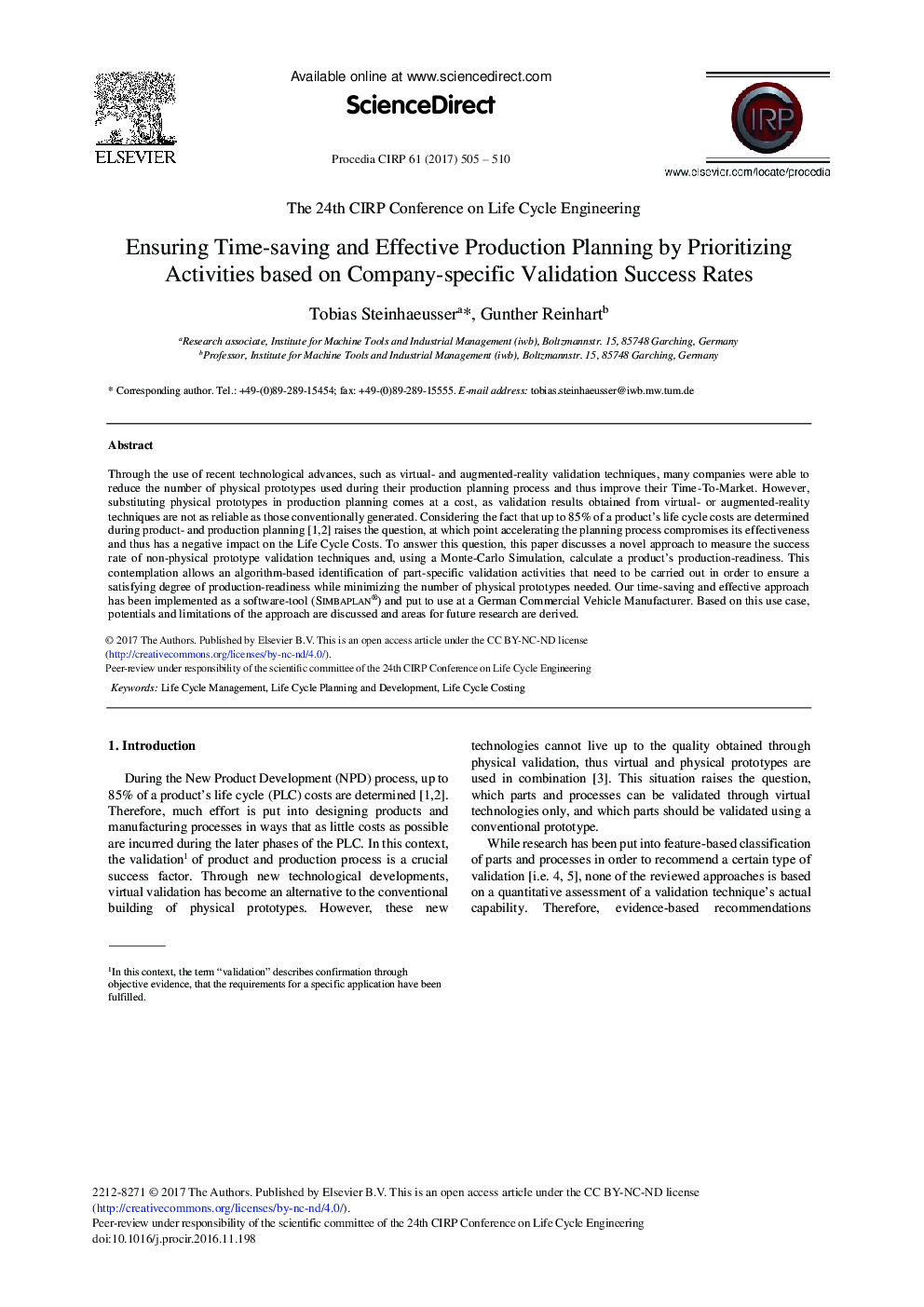| Article ID | Journal | Published Year | Pages | File Type |
|---|---|---|---|---|
| 5470557 | Procedia CIRP | 2017 | 6 Pages |
Abstract
Through the use of recent technological advances, such as virtual- and augmented-reality validation techniques, many companies were able to reduce the number of physical prototypes used during their production planning process and thus improve their Time-To-Market. However, substituting physical prototypes in production planning comes at a cost, as validation results obtained from virtual- or augmented-reality techniques are not as reliable as those conventionally generated. Considering the fact that up to 85% of a product's life cycle costs are determined during product- and production planning [1], [2] raises the question, at which point accelerating the planning process compromises its effectiveness and thus has a negative impact on the Life Cycle Costs. To answer this question, this paper discusses a novel approach to measure the success rate of non-physical prototype validation techniques and, using a Monte-Carlo Simulation, calculate a product's production-readiness. This contemplation allows an algorithm-based identification of part-specific validation activities that need to be carried out in order to ensure a satisfying degree of production-readiness while minimizing the number of physical prototypes needed. Our time-saving and effective approach has been implemented as a software-tool (Simbaplan®) and put to use at a German Commercial Vehicle Manufacturer. Based on this use case, potentials and limitations of the approach are discussed and areas for future research are derived.
Related Topics
Physical Sciences and Engineering
Engineering
Industrial and Manufacturing Engineering
Authors
Tobias Steinhaeusser, Gunther Reinhart,
